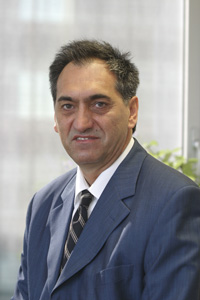by Jesús Villasante, European Commission, DG Information Society and Media, Head of Software & Service Architectures and Infrastructures Unit.
The evolution towards a service-based economy represents today more than 70% of the GDP in developed countries. This evolution is expected to continue and to influence our lifestyle in the coming decades but the full potential of the service-based economy can only be grasped if it builds on new technologies for the design, development and operation of new services and service platforms.

This trend towards a service-based economy is a challenge to everybody and a new opportunity for Europe to position itself at the centre of innovation in this global race. European research and industry should play a key role in the establishment of the future IT service platforms, notably by influencing global standards, and contribute to the development of the capabilities required for Europe to design and deploy innovative services in order to remain competitive in our new globalised and knowledge-based world.
Over the past years, Service-Oriented Architectures have become a paradigm among enterprises for enabling more efficient and flexible business processes and addressing some of the technological challenges posed by the service-based economy. Using loosely coupled services, they allow discovering, orchestrating and composing capabilities that are needed by end-users, business processes or other services. Service-Oriented Architectures can help businesses to react more quickly and cost-effectively to changing market conditions.
In parallel with these developments, research on Grid Technologies has evolved from its initial focus on complex eScience applications towards general-purpose service infrastructures that can also be used by business and industry. The emphasis is now on the dynamic provision of resources in an easy and transparent manner to allow translating business or user requirements to infrastructure capabilities. The focus is also on the convergence with the service paradigm so that the infrastructure can be managed according to more flexible and dynamic business practices.
This convergence has extended the scope of research on Service-Oriented Architectures to address the implementation of these services in the available Grid infrastructure. The aim is that it becomes a utility allowing the dynamic allocation and assembly of resources as required by the applications, thus supporting business agility and flexibility at the infrastructure level.
A number of research and technical challenges still need to be addressed before this vision becomes reality. To mention just a few, security and privacy are essential factors for take up, but also performance and quality of service, easy manageability and low deployment costs, particularly in the case of large scale systems. Key challenges are also of a business nature: precise accounting across all layers, enforcement and tracking of policies down to the infrastructure level, business model identification, or supporting business agility and more efficient business processes.
The IST research programme of the European Commission has strongly contributed to these developments. During the 6th Framework Programme, the activities related to software and services have catalysed European research on service architectures and related technologies, while the activities on Grid technologies have prepared the transition towards service infrastructures.
In parallel to these activities, the Networked European Services and Software Initiative (NESSI) has brought together key European industrial players in the area to address the major changes that are driving the IT services marketplace. NESSI is developing a strategic research agenda for the software and services area, is addressing the technological, business and policy challenges, and is securing industrial leadership in these developments and their take up.
This provides a good starting point for Europe to continue at the forefront of these developments while being ready to grasp their business and commercial benefits. In the 7th Framework Programme that has just started, Service-Oriented Architectures is one of the pillars of our R&D activities and will provide new opportunities to make the Software and Services vision a reality.
See also: http://cordis.europa.eu/fp7/ict/ssai/home_en.html
Jesús Villasante









